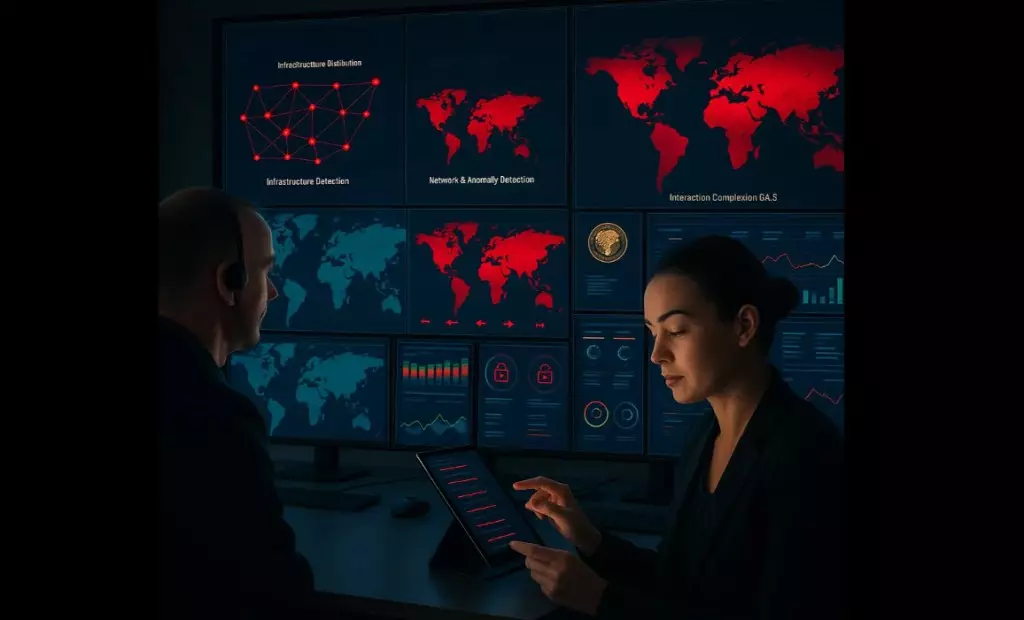The recent dismantling of DanaBot, a notorious Russian malware platform, stands as a pivotal moment in the cybersecurity landscape, illustrating how agentic AI is transforming the defense against cyber threats. Responsible for infecting over 300,000 systems and incurring losses exceeding $50 million, DanaBot operated as a malware-as-a-service (MaaS) ecosystem that not only harbored criminal undertakings but also acted as a tool for state-sponsored espionage. The urgency to combat such sophisticated threats necessitates a decisive shift in the strategies employed by cybersecurity professionals, emphasizing the importance of employing advanced AI technologies for proactive defense.
Agentic AI represents a leap from conventional methods, allowing Security Operations Centers (SOCs) to evolve from reactive measures to intelligence-driven responses. This transformation becomes crucial in a landscape where the adversaries, like those behind DanaBot, are relentless, continually adapting their strategies to exploit traditional defenses. As report after report reveals the staggering speed and sheer volume of attacks, cybersecurity systems need to not only keep pace but also lead the charge against cyber adversaries.
The Significance of the DanaBot Operation
The operations behind DanaBot were sophisticated and methodical, leveraging an infrastructure comprising over 150 command-and-control (C2) servers. This allowed the platform to compromise thousands of victims daily across more than 40 countries. Its operators, SCULLY SPIDER, navigated a climate of minimal scrutiny from Russian authorities, suggesting a level of governmental tacit approval or involvement. The intertwining of financial crime and state-sponsored espionage observed in DanaBot’s activities reflects a troubling trend that further complicates the landscape for cybersecurity practitioners.
The significance of the DanaBot takedown extends beyond mere numbers; it underscores the necessity for adaptive and intelligent defense mechanisms. The malware transitioned from a banking trojan to a versatile attack toolkit capable of executing ransomware, espionage, and distributed denial-of-service (DDoS) operations. This evolution demonstrates the dynamic nature of cyber threats today, mandating a need for cybersecurity frameworks that can adapt and respond to ever-changing attack vectors.
Agentic AI: The Game-Changer
The unveiling of agentic AI’s capabilities during the DanaBot operation marks a watershed moment for SOCs. This innovation enabled cybersecurity teams to pivot from lengthy, manual forensic analyses to leveraging predictive threat modeling, real-time telemetry correlation, and automated anomaly detection. Where traditional defenses were rendered ineffective against the myriad complexities of DanaBot’s architecture, agentic AI allowed analysts to reclaim valuable time and resources, streamlining their efforts against a formidable adversary.
The substantial reduction in alert fatigue, notably caused by the overwhelming false-positive rates associated with legacy SIEM systems, underscores a core benefit of agentic AI. Modern AI-driven platforms, such as those from Cisco and CrowdStrike, automatically triage and analyze alerts with a focus on the most pressing threats. Consequently, SOC analysts are empowered to function more efficiently, addressing significant risks rather than becoming mired in an inundation of alerts.
Shifting Paradigms in Cyber Defense
Today’s adversaries, equipped with advanced AI tools themselves, operate at a blistering speed. For SOC teams, the stakes have never been higher. As revealed in industry analysis, the average breakout time for a cyberattack now hovers around two minutes, leaving little room for traditional defensive protocols. It is within this rapidly evolving threat landscape that agentic AI takes center stage, facilitating a paradigm shift in how organizations perceive and respond to cyber threats.
A strategic approach to integrating agentic AI can unlock significant advantages for SOC teams. Instead of attempting to automate every task, high-performing SOCs are advised to target the most repetitive, high-volume tasks first, such as phishing triage and log correlation. This focused automation not only enhances operational efficiency but also enables teams to channel their efforts into monitoring and addressing more complex threats.
Building a Resilient AI-Driven Security Framework
As organizations transition to incorporate agentic AI into their cybersecurity frameworks, establishing robust governance from the outset is vital. The empowerment of AI-driven systems comes with inherent responsibilities; hence, clear rules of engagement, audit trails, and defined escalation paths must be established to guide automated decision-making. This proactive governance ensures that human oversight remains integral to the operational framework, maintaining a level of control even as systems become more autonomous.
Moreover, aligning AI initiatives with meaningful performance metrics is crucial for sustainable success. SOCs must focus on key performance indicators that resonate beyond their immediate environment, such as reduced incident resolution times and improved analyst throughput. Integrating AI outcomes with these metrics can help teams build a compelling case for continued investment in advanced AI technologies.
Ultimately, the DanaBot takedown exemplifies a groundbreaking moment not just in the defeat of a formidable cyber adversary, but in demonstrating the power and potential of agentic AI in enhancing cybersecurity operations. As businesses face increasingly sophisticated threats, the ability to respond quickly and intelligently will differentiate successful organizations from those that lag behind in the digital arms race.

